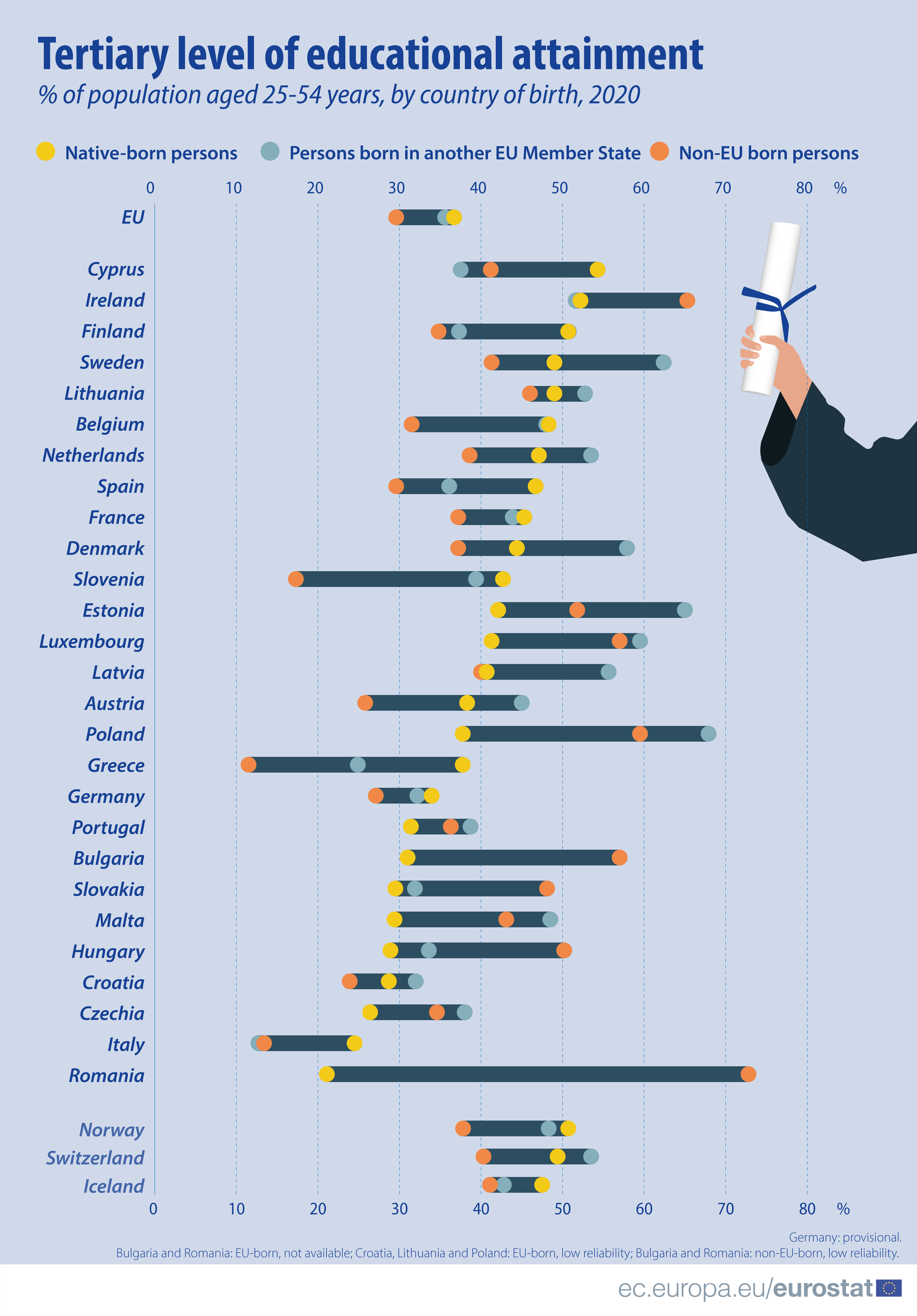
An important dimension of migrant integration into host societies is the level of educational attainment. In 2020, just over one third (35.6%) adult migrants (aged 25-54) who were born in another EU Member State had a tertiary level of education. This rate was lower for migrants who were born outside the EU (29.6%).
By contrast, the share of tertiary educated population living in their Member State of birth was 36.7%. Among the Member States for which data are available for 2020, Poland’s migrant population aged 25-54 born in another EU Member State had the highest share of completed tertiary education (67.9%), followed by Estonia (65.0%) and Sweden (62.4%).
For migrants who were born outside the EU, 72.8% had a tertiary level of education in Romania, followed by Ireland (65.3%) and Poland (59.5%). At the other end of the scale, in Italy, 12.7% of persons aged between 25-54 born in another EU Member State had a tertiary level of education, followed by Greece (24.9%). Greece (11.5%) and Italy (13.4%), followed by Slovenia (17.3%) reported also the lowest shares of non-EU-born population with a tertiary level of educational attainment.
For the native-born population, the highest share of those aged 25-54 with tertiary education in 2020 was observed in Cyprus (54.3%), and the lowest share in Romania (21.1%).
Source dataset: edat_lfs_9912
Share of population with tertiary education higher among women than among men
In 2020, the share of women in the EU aged 25-54 with a tertiary level of educational attainment was higher than the share for men across all of three population subgroups: native-born, persons born in another EU Member State and persons born outside of the EU.
The biggest gender gap was recorded for the native-born population, where the share of women with a tertiary level of education stood at 40.6% compared with 32.9% for men (a gap of 7.7 pp), while this gender gap stood at 5.0 pp between persons born elsewhere in the EU and 4.1 pp between persons born outside the EU.
For the two lower levels of educational attainment (upper secondary or post-secondary non-tertiary level of education and at most a lower secondary level of education) for all three population subgroups the share of men was higher than women.
Source dataset: edat_lfs_9912
For more information:
- Statistics Explained article on migrant integration statistics – education.
- Eurostat website section on Migrant integration.
- Eurostat database of migrant integration statistics.
- Specific note on Germany: since the first quarter of 2020, the Labour Force Survey (LFS) has been integrated into the newly designed German microcensus as a subsample. Unfortunately, for the LFS, technical issues and the COVID-19 crisis has had a large impact on the data collection processes, resulting in low response rates and a biased sample.
To contact us, please visit our User Support page.
For press queries, please contact our Media Support.



